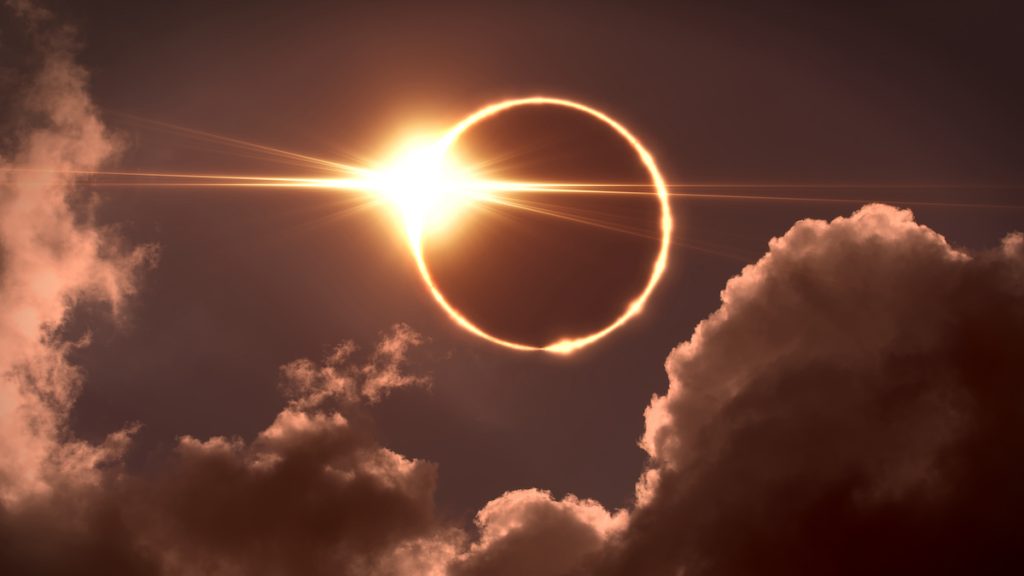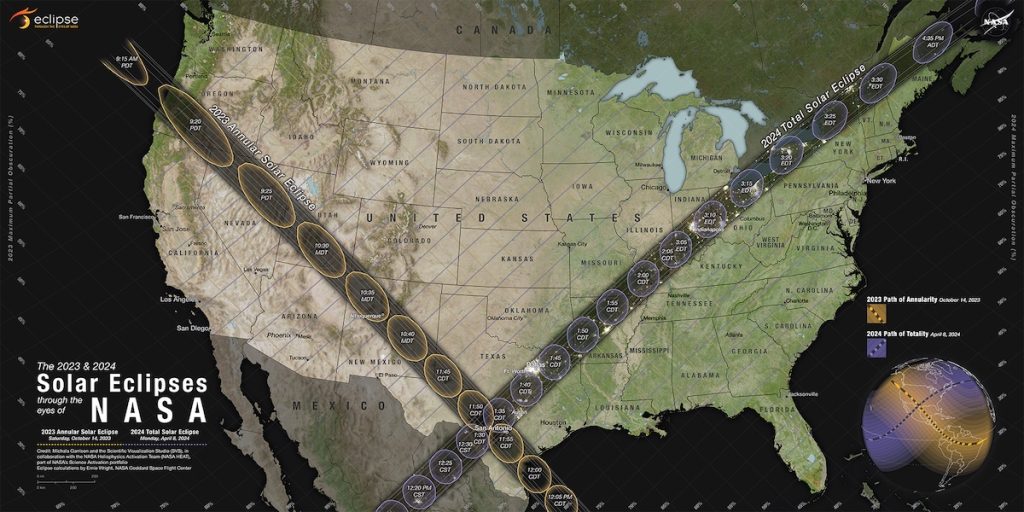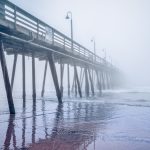A Rare Solar Eclipse Will Be Visible in San Diego. Here’s How to See It


One of the last chances to see a total solar eclipse in San Diego for decades will happen on Monday, April 8. Here’s how to view it.
A total solar eclipse will plunge portions of North America into total darkness on Monday — and it’ll be one of the last times to see a total solar eclipse in San Diego for at least 20 years, according to NASA.
NASA notes that a total solar eclipse occurs when the Moon passes between the Sun and Earth in perfect alignment. This creates a phenomenon where no light from the Sun can get through, darkening the sky similar to dusk or dawn.

The solar eclipse is set to darken parts of Mexico. It’ll then cross into Texas and create a path of “total darkness” as it travels across the U.S. to Maine. It will be the last total solar eclipse until Aug. 23, 2044.
The path of totality won’t cross over San Diego, but America’s Finest City won’t be plunged into total darkness on Monday. However, San Diego will be one of the best places to see a partial eclipse in California on Monday, with 55% of the sun covered.
Here are some tips on seeing the total solar eclipse in San Diego:
How to see the solar eclipse in San Diego
- When: In San Diego, the solar eclipse will start around 10:03 a.m. on Monday. The best parts will occur later, so you’ll want to start look up between 10:45 a.m. and 11:45 a.m.
- Where: You’ll be able to see the eclipse anywhere in San Diego, but some places will hold special viewing parties for the event. This includes the Taylor Library in Pacific Beach or the Fleet Science Center at Balboa Park.
- How: You should never stare at the sun or an eclipse with your eyes. Instead, use solar eclipse glasses, which will be available at some area libraries. You can also make a small hole in a piece of paper or cardboard, and view the resulting shadow.
Media credit: Banner image licensed from Adobe







